A cozy mid-winter escape — Lily Stone Café

Lily Stone Café is located in a 100-year-old house in Rosenort and operates year-round. (Lily Stone Gardens)
Wouldn’t it be nice this February to step into a warm and inviting atmosphere in a beautifully appointed farmhouse that’s a mere 45 minutes south of Winnipeg to enjoy a delicious homecooked meal in a cozy café?
The Lily Stone Café is the perfect mid-winter escape! Located at 31 Rose Ln. in the town of Rosenort, the Lily Stone Café is housed in a charming 100-year-old house and operates year-round (hours are Monday to Saturday, 8 a.m. to 3 p.m.).
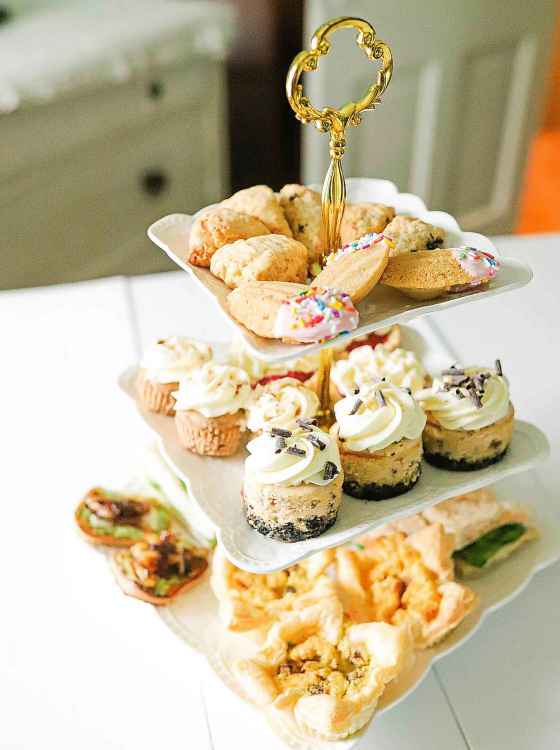
The café has a breakfast and lunch menu, as well as an in-house bakery. (Lily Stone Gardens)
Specializing in homemade soups, cinnamon buns, and a breakfast and lunch menu, the Lily Stone Café also includes an in-house bakery.
Kelly Tellier, owner and flower farmer, invites you to also visit Lily Stone Gardens which is located just five minutes outside of Rosenort (28084 Hwy. 422) where you can shop for gifts and seeds for growing your own gorgeous cut flowers.
Flower seed recommendations
“Our seed line offers specialty cut flower seeds that are tried and tested for Manitoba’s growing conditions,” says Tellier. “There are seed options for every level of gardener.
“For the beginner gardener, you are almost guaranteed success with direct seeding zinnias, cosmos, forget-me-nots, and Queen-Anne’s lace.
“For the gardener who wants to grow flowers for dried flower use, there is gomphrena, statice, and one of my forever favorites, strawflower.
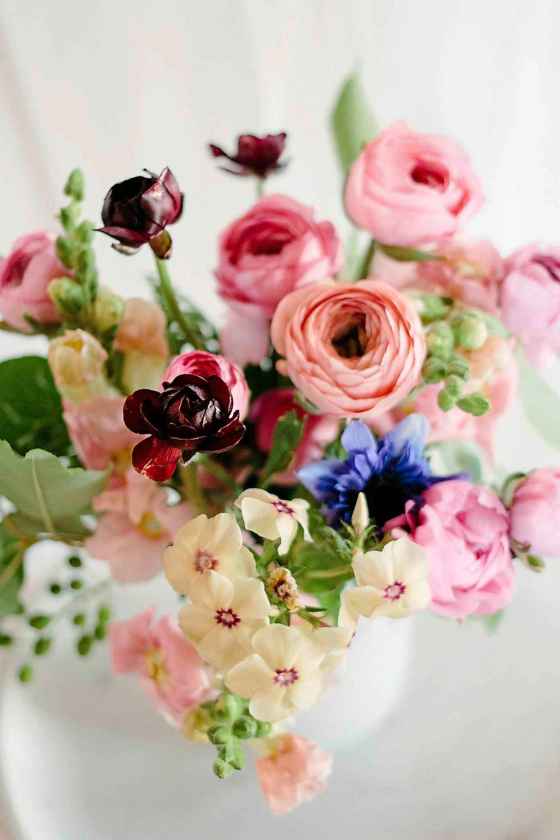
You can grow your own flowers to make cut or dried arrangements. (Lily Stone Gardens)
“For the seasoned gardener, we have lisianthus seed and foxglove.
“The goal of our seed line is for people to experience the joy of growing cut flowers. The process from start to finish — choosing your seeds, planting and nurturing them until they are mature enough for cutting, and spending time designing — is what is so special.”
Lily Stone Garden’s seed launch started Jan. 14. To prepare for its annual seed launch, Lily Stone’s staff counted by hand the seed for more than 10,000 seed envelopes. All the seed and corms are from flower varieties grown and tested at the flower farm at Lily Stone.
Browse the full collection on Lily Stone Garden’s website. There are also tips for growing lisianthus, anemone, and ranunculus.
How to grow and care for African violets
African violets continue to be one of the most popular houseplants, says Bonnie Batchelor, president of the Winnipeg African Violet Society (WAVS).
“You can buy them anywhere — supermarkets, garden centres — for about $5 or $6,” says Batchelor.
“The African violet is really the perfect houseplant because it likes the conditions that the majority of us live in,” says Batchelor.
“They are native to Africa so obviously they are tender (not cold hardy) and so a house atmosphere is perfect for them. An African violet will bloom for a long time, but I wouldn’t say year-round — few plants can withstand that kind of growth — but it can bloom for very long periods of time and it comes back into bloom fairly rapidly.”
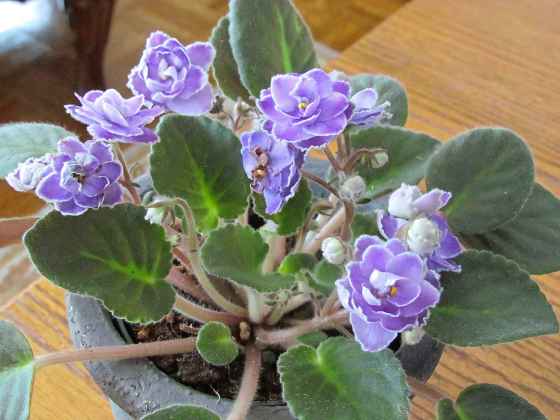
The African violet is the perfect houseplant. (Susan Kotello)
African violet plants will be very long lived — up to 20 years or more — if you provide them with everything they need, says Batchelor. “It takes energy for African violets to flower consistently. The big three requirements are light, moisture and food.”
Below, Batchelor shares her growing recommendations including a tip for displaying your African violets.
Lighting
African violets need 10 to 12 hours of supplemental light each day. I use a fluorescent light fixture with a double tube that is 4 ft. (1.2 m) long that I place above my plants. I use a timer so that I don’t have to think about it. There are many different types of lighting options, including LED.
Another option is to place your plant on a table beneath a gooseneck lamp. You don’t have to use artificial lighting. You can grow African violets on a windowsill.
But if you are relying on sunlight, African violets do not tolerate the direct heat of the sun. They want the light but they do not want to be scorched by the sun. Set your plants back a little bit. This is especially important in the summer months when the sunlight is more intense, otherwise the leaves will burn.
Moisture
Watering African violets can be a bit tricky. You don’t want your plants to be too wet or too dry. There is a difference between wet and damp. The soil that your African violet is planted in should be damp. Your plant should never sit in water.
Give your plant a good drink. When the water runs out of the bottom of the pot and the soil feels moist to the touch, then that is enough. Multiple little sips are better than one big drowning. Proper watering is a learned thing and most of us learn the hard way.
Proper watering also depends on your soil mixture. A store-bought African violet is typically planted in a very heavy peat mix because that helps to retain moisture for the long distance that plants are shipped before they arrive at retail locations.
But a heavy peat mix is also more susceptible to drying out. Bone-dry soil is difficult to rehydrate. I recommend making your own soil mixture that consists of equal parts of sphagnum peat moss, perlite, vermiculite, and African violet soil mix. Make it light and fluffy. You may have to water more frequently but the water will drain through the soil more readily. Again, multiple sips are better than a big drowning once a week which leaves your plant sopping wet.
Feeding your African violet
First, it is important to not have your small African violet in a pot that is too large. For one thing, your plant will not be able to use the amount of water that is required to moisten surplus soil.
Ideally, your African violet should be in a pot with a limited amount of soil. This will enable your plant to use up the amount of fertilizer that it is given.
Feed your plant every couple of weeks or once a month. I can’t remember what I went downstairs for let alone remember when I fertilized my plants! So I use the method of continuous fertilizing. I apply a one-quarter-strength diluted liquid fertilizer (one part fertilizer with three parts water) at each watering. I use a balanced African violet fertilizer.
I feed my African violets year-round because they are under lights, so they are actively growing. But if you are growing your plants on a windowsill, their requirements are different in the winter months because some days the light levels are very low. I would recommend cutting back on the amount of fertilizer because your plants will not be utilizing it. They still need some food but not as much as plants that are under grow lights for 12 hours a day.
How to display your African violet
If you have any multiples of a houseplant, it is always better to group them together, says Batchelor.
“African violets evaporate moisture when you water them. Grouping African violets together increases the humidity around your plants by producing a mini greenhouse effect. Plus, it also looks attractive to have a small grouping of plants on a table or under a light fixture on a shelf. More is always better than one!”
In next month’s issue of Winnipeg Gardener, Batchelor will talk about new African violet cultivars with amazing variations in foliage and blooms along with new breeding developments that provide greater resistance to pests.
Create your own indoor window box
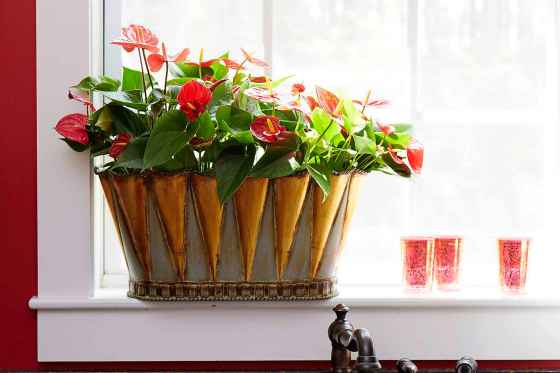
Anthurium grows best in a medium- or brightly lit window. (Costa Farms)
Flowering anthurium and cyclamen plants are popular winter-flowering plants that can be found at many garden centres, grocery stores, and florist shops in February. Anthurium and cyclamen are available in a range of colours.
Why not create your own indoor window box with a beautiful grouping of potted plants that are in full bloom?
It’s as simple as choosing a basket or rectangular planter and then inserting your plants. Tuck in some moss to fill in any gaps.
Place cyclamen in a cool room and water only moderately. Use a dilute fertilizer solution and remove any withered flowers to maintain an attractive display. In spring, after the risk of frost has passed, your cyclamen can be moved outdoors into a protected location away from direct sunlight. Part shade is best.
Grow anthurium in a medium or bright window or under grow lights. Protect it from any drafts. The soil should be moist, not wet. Anthuriums do not require regular fertilizing. In spring, after the risk of frost, your anthurium can go outdoors into a shady location.
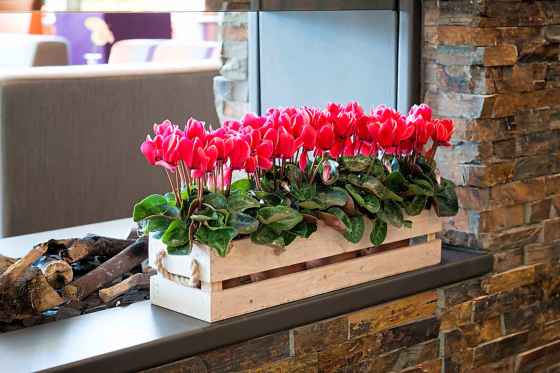
Cyclamen plants need a cool room and moderate watering. (Schoneveld Breeding)
Navigating the St. Mary’s strip
Even with GPS, it’s not easy finding the garden centres on St. Mary’s Road. The new interchange at St. Mary’s Road and the Perimeter Highway has frustrated both retail owners and their customers.
But in case you missed it, this Dec. 9 article in the Free Press includes a great map by Sage Gardens, which is also included on their website.
And here is a revised version of that map as a downloadable pdf.
For someone like myself who is directionally challenged at the best of times, I found the map very helpful.
Planning a rain garden
The city of Winnipeg announced plans last fall to design and construct a rain garden in north Winnipeg.
My column on Feb. 1 is about the St. George Rainway project in Vancouver.
The city of Vancouver has shared its planting concept and plant list with Winnipeg Gardener readers. Although our climates differ, the list is a fascinating look at the types of deep-rooted perennials and grasses recommended for rain gardens.
If you are planning a rain garden, choose zone 3 plant varieties which are specifically bred to be able to survive our colder temperatures. Native plants which can tolerate both wet and dry conditions are ideally suited for rain gardens.
What is the difference between a rain garden and a dry creek bed?
Rain garden versus dry creek bed — know the difference
A rain garden and a dry creek bed both manage water runoff in the landscape but act in different ways.
A rain garden is a small depression (about 20 to 30 cm) in a low-lying area that collects and absorbs rainwater which then slowly percolates into the ground.
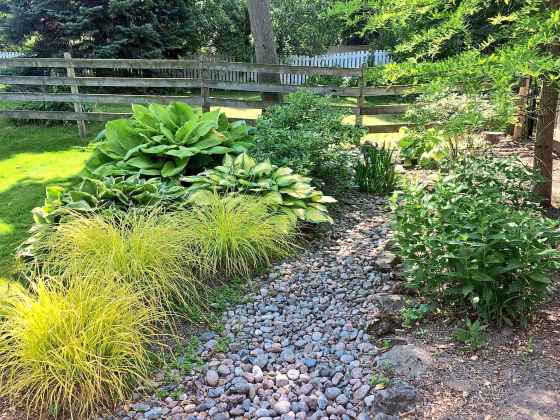
Rain garden collects water (Sean James)
Typically, rainwater that feeds a rain garden is harvested from a rooftop. A rain garden is planted with native plants. Their deep root systems create channels for the water to percolate deep into the soil.
A dry creek bed, also known as a dry stream bed, looks similar to a rain garden. However, its primary function is to direct the flow of water away from an area. A dry creek bed is useful and attractive on a sloped landscape.
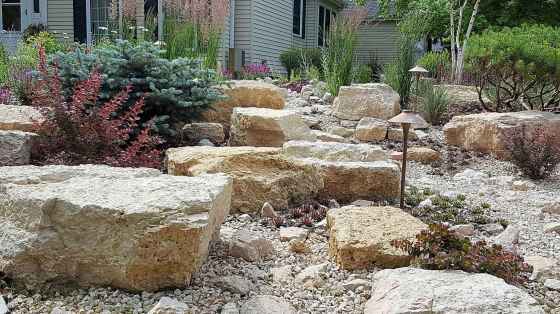
Dry creek bed (Colleen Zacharias)
Could tariffs result in plants costing more?
The Canadian and U.S. horticulture industries are closely intertwined. The potential for tariffs is of concern for Canada’s fruit, vegetable and specialty crop growers.
But what about the potential impact of tariffs for the Canadian ornamental industry?
According to this statistical overview by Agriculture Canada, our ornamental horticulture sector includes the floriculture (potted plants and cut flowers), nursery, Christmas tree, and turf sod industries. Nursery growers in provinces across Canada, including here in Manitoba, export plants to the U.S.
Year after year, the United States is the number one source of Canada’s floriculture and nursery imports. Growers on both sides of the border are watching the situation closely.
Briefly, let’s look at two areas that have potential for increasing the cost of plants this spring:
Peat
Growers rely heavily on peat. Canada is the world’s largest peat producer and Manitoba accounts for 18 percent of Canada’s total horticultural peat production.
The majority of peat used by U.S. growers is sourced from Canadian peat bogs.
As this Nov. 27 article in Nursery Management explains, a 25 per cent tariff on Canadian peat exported to the U.S. would likely result in increased plant prices for both Canadian and U.S. customers.
Plastic nursery pots and trays
There are several companies in Canada that make plastic nursery pots and trays, however, large volumes of our plastic nursery pots and trays come from the U.S. The low Canadian dollar will increase the cost of items such as plastic nursery pots and trays that Canadians purchase in U.S. dollars.
As for what it will all mean for consumers who are shopping for plants this spring at local garden centres remains to be seen.
But this is also an opportunity for all of us to become more familiar with Canadian growers and their products. Let’s start right now!
Stallion Amur Cork Tree
The tree-breeding work at Jeffries Nurseries in Portage la Prairie has resulted in the introduction of many hardy trees over the years. With the urban canopy in cities and towns under threat by invasive insects and disease, breeding work at Jeffries is focused on tree diversity.
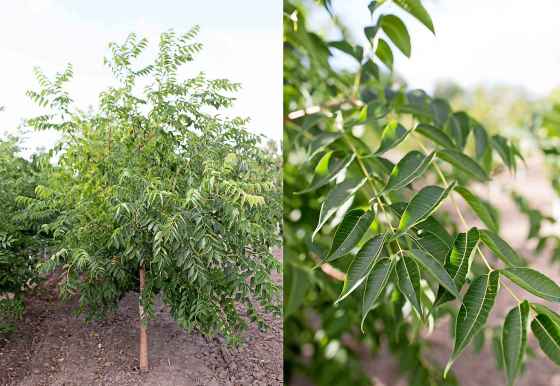
The Stallion Amur cork tree (Jeffries Nurseries)
Stallion Amur cork tree (Phellodendron amurense) is a new introduction by Jeffries Nurseries. Jeffries has been testing the seedling material for more than 20 years and testing the selection for the last seven years, says Andrew Ronald, Jeffries Nurseries.
Andrew Ronald, Jeffries Nursery, says that Stallion Amur cork tree is a medium size tree (13 m tall and 10 m wide) with a broad, well-rounded canopy that provides excellent shade. The form is comparable to Manchurian ash. “Leaves are compound and turn from a glossy green colour in summer to a striking golden yellow in the fall,” says Ronald.
Stallion is a male seedless selection of Phellodendron amurense. It is not messy. It is adaptable to a range of soil types and pH including alkaline soils. It has very few pests and shows no ill effects from air pollution or salt spray, says Ronald.
The thick greyish-brown corky bark that is found on mature specimens is one of the many attributes that makes Stallion an excellent choice for the diverse landscape. It is hardy to zone 3. Plant in full sun.
New for 2025: Stardiva fan flower
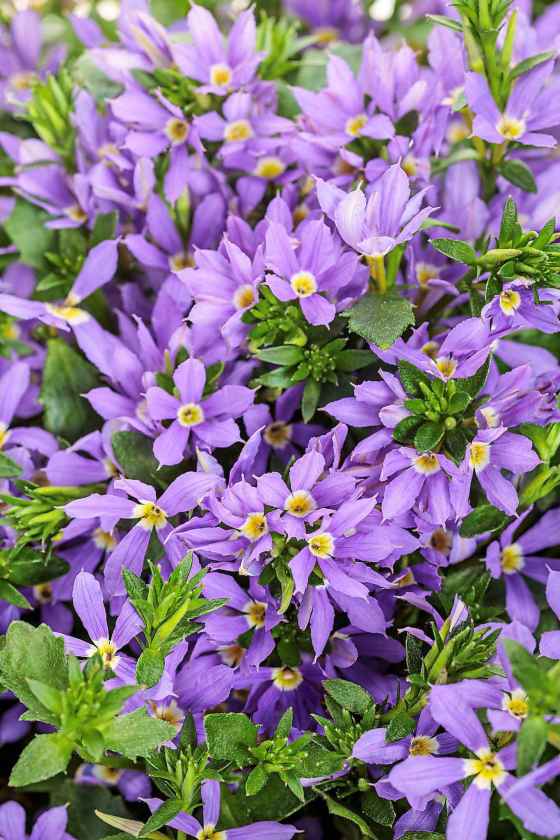
The Stardiva fan flower has a unique shape. (Proven Winners)
Stardiva fan flower is sure to find many fans. Interestingly, the shape of this new fan flower from Proven Winners isn’t like the distinctive half-circle of other fan flowers.
Available in white, pink, and blue shades, Stardiva from Proven Winners is the first-ever series of Scaevola aemula that has star-shaped rather than fan-shaped flowers. The unique shape means more flowers for your annual container displays.
Stardiva plants form a compact, densely mounded to semi-trailing mound. This new series for 2025 will stand up to sun, heat, humidity, rain, drought and wind.
Product profile: Les Verts Indoor Garden Systems

The Les Verts indoor hydroponic garden system (Mavis McRae)
Les Verts Terrace is a deluxe indoor gardening system by Les Verts Living, a Manitoba-owned company based in Winnipeg Les Verts Living, which promotes sustainable hydroponic gardening solutions, was first featured in the Free Press by business reporter Martin Cash prior to unveiling its deluxe hydroponic growing unit at the Winnipeg Renovation Show in January 2024.
Last year I had the opportunity to tour Les Verts’ showroom at 3000 McGillivray Blvd. Les Verts Living has now partnered with T&T Seeds, 7724 Roblin Blvd., to market and distribute its indoor gardening systems.
An eager audience joined Les Verts Living for its launch party at T&T Seeds on Jan. 22. Designed and built in Canada, the Les Verts indoor garden systems are now on display at T&T Seeds. Stop by T&T Seeds to see the Les Verts Terrace and the Les Verts Terrace Pro and the leafy greens, fresh herbs, and edible flowers that are being grown in the units.
T&T Seeds will also be promoting Les Verts Living’s lineup of curated seeds and growing supplies and have now started pineberries for transplanting into the indoor gardens, says Jennifer Bailes, co-founder of Les Verts Living.
Winnipegger Mavis McRae recently purchased a Les Verts Terrace unit for her home use. McRae is the founding director of RRC Polytech’s culinary research program which started in 2014 and has been involved in food product development for more than 25 years.
McRae had a chance to try out the larger Les Verts Terrace Pro at RRC and loved how it performed. Currently she is growing four miniature tomatoes, two mini peppers, two heads of lettuce, dill, parsley and basil and a half tray of microgreens in her unit at home. She has also started some of her outdoor plants in her Les Verts Terrace unit including two echinacea plants and three Mucho Nacho jalapeno plants.
McRae plans to start more of her food and outdoor seedlings in her new and innovative indoor garden system. Winnipeg Gardener will check back with McRae in a few months time to find out things are growing!
The Les Verts Indoor Garden System costs $1,899.
To learn more, drop by T&T Seeds or visit www.lesverts.com.
Fleurs de Villes — where have all the flowers gone?
Thousands of flowers were used to create the lavish floral display at last month’s Fleurs de Villes exhibit at The Leaf. What happens now?
Immediately following the conclusion of the incredibly popular event on Jan. 26, florists began dismantling the mannequins, says Gerald Dieleman, senior director or horticulture at Assiniboine Park Conservancy. “Our park volunteers salvaged as much floral material as possible,” says Dieleman.
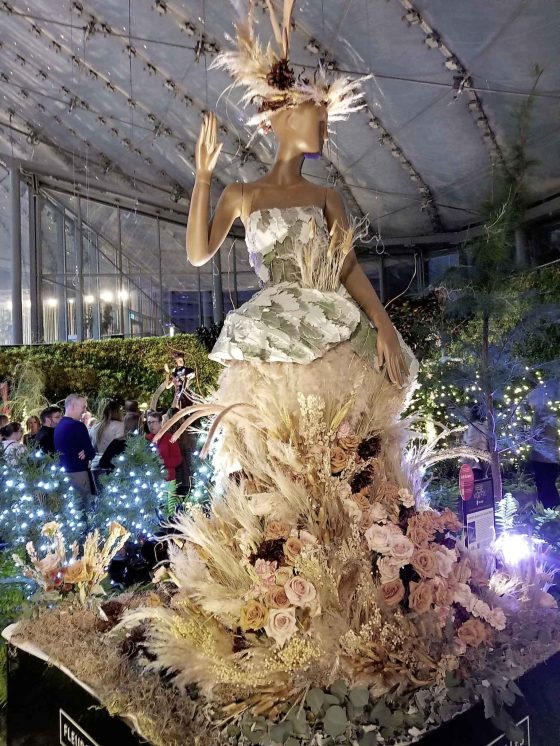
The flowers used in last month’s Fleurs de Villes exhibit at The Leaf are now hanging to dry. (Colleen Zacharias)
The salvaged florals will be repurposed by the volunteer-run Create & Connect Program and will also be used in future displays in the Babs Asper Display Biome. “Our horticulture team plans to dry spent roses and use the petals for a future display for ornamental purposes,” says Dieleman.
“This repurposing effort reflects our ongoing commitment to sustainability while exploring creative new ways to maximize the use of materials,” says Dieleman.
Jody Watson is the senior director of education and programming at Assiniboine Park Conservancy. “We really challenge the volunteers in the Create & Connect Program to get creative with whatever materials they are using,” says Watson. Following the 2024 Fleurs de Villes event, volunteers made cut-outs of miniature mannequins and people of all ages decorated them.
The flowers collected from this year’s event are now hanging to dry. The Create & Connect program takes place in the classroom at The Leaf on two Sundays a month. The public is welcome to participate for free. Learn more by visiting assiniboinepark.ca.
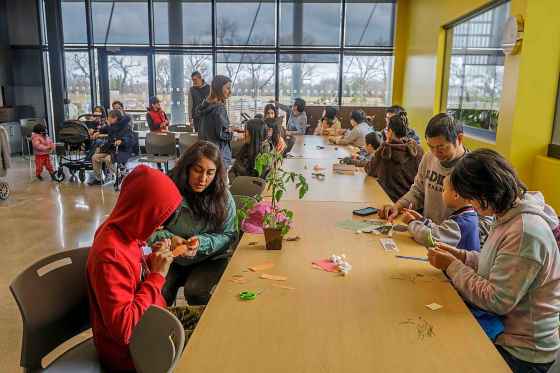
The Create and Connect program at The Leaf repurposes florals. (Assiniboine Park Conservancy)
Mark your calendars
On Saturday, Feb. 8 from 12 p.m. to 2 p.m. at the Dave Barber Cinematheque Theatre, 100 Arthur St., the Manitoba Master Gardener Association presents the film viewing of Wilding, an award-winning British documentary film about an extraordinary rewilding project at Knepp Wildland in West Sussex, England. The film is based on the bestselling book by Isabella Tree. Tickets are $15 and are available online only. Please visit mgmanitoba.com.
Manitoba Nursery Landscape Association will host GROW25 at CanadInns Polo Park, 1405 St. Matthews Ave., on Friday, Feb. 14. This day-long event features a diverse lineup of speakers and topics related to horticulture and gardening. To register, visit mbnla.com.
Assiniboine Food Forest presents Seedy Sunday at the Ukrainian Reading Hall, 1005 Assiniboine Ave. in Brandon, on Feb. 16 from 11 a.m. to 4 p.m. Seed exchange, displays, and vendors. Refreshments and kids’ area. Free admission.
Audrey Logan, Neheyaw Métis knowledge keeper and traditional food teacher, will present “Learning from Indigenous farming before the fur trade” on Monday, March 3, at 7:00 p.m. This free Zoom presentation is hosted by the Manitoba Master Gardener Association. Register at mgmanitoba.com.
Winnipeg Seedy Saturday will take place Saturday, March 8 at the Millennium Public Library, 251 Donald St., in partnership with the Spence Neighbourhood Association and Seeds of Diversity. 10:30 a.m. to 3:30 pm. This year’s event features a film screening, market, kids’ table, skills sharing and the ever popular seed swap! Free admission.
Bloomfest Indoor Winter Garden

It’s Bloomfest’s second year. (Megan Cory)
On Jan. 14, volunteers from the Grand Forks Horticultural Society participated in planting 6,000 tulip bulbs and 500 hyacinth bulbs. The bulbs were planted in one day!
The flowers will be in full bloom in time for the annual Bloomfest Indoor Winter Garden which is held at the Lincoln Golf Course clubhouse, 250 Elks Dr., Grand Forks. The public open house is Feb. 11-21. No registration is necessary.
Bloomfest is hosted by the Grand Forks Parks District. Katy Cavanaugh, horticulturalist, says that this is Bloomfest’s second year.
“We started it in 2024 because we were donated 11,000 bulbs the previous fall from Lowe’s,” says Cavanaugh. “Bloomfest was such a big hit and the Grand Forks Horticultural Society enjoyed helping us plant the bulbs so we decided to host the event again this year.
“We chill the bulbs for 11 to 14 weeks and then we plant them. The flowers pop up in about four to six weeks. We try to time the bulbs to all bloom at the same time,” says Cavanaugh.
Last year the bulb display included daffodils but they did not work as well. “They got kind of moldy,” says Cavanaugh. “So we are just doing tulips and hyacinths this year. The fragrance is amazing and the blooms are bright and cheery.”
Bloomfest’s open house is every afternoon from Feb. 11-21.
|

